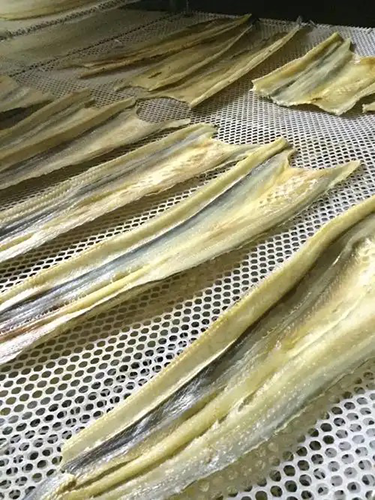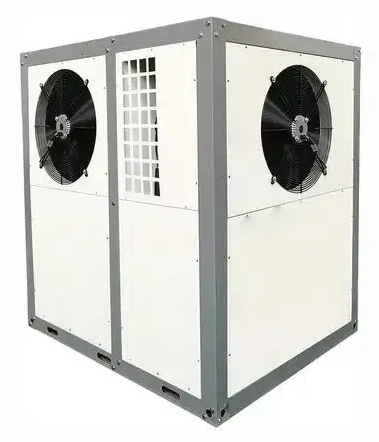
Content Menu
● Introduction
● Food Dehydration Process
>> What is a Heat Pump Dryer?
>> How Does a Heat Pump Dryer Work?
● Benefits of Using Heat Pump Dryers
>> 1. Energy Efficiency
>> 2. Preservation of Nutritional Value
>> 3. Versatility
>> 4. Consistent Drying Results
>> 5. Reduced Risk of Spoilage
● Applications of Heat Pump Dryers in Food Industry
>> Case Study: Snack Production
● Factors to Consider When Buying a Heat Pump Dryer
>> Capacity
>> Temperature Control
>> Energy Consumption
>> Maintenance Requirements
>> Price Point
● Installation Considerations
● User Experience with Heat Pump Dryers
>> Customer Testimonials
● Conclusion
● Related Questions
>> 1. What foods can be dried using a heat pump dryer?
>> 2. How long does it take to dry food in a heat pump dryer?
>> 3. Are heat pump dryers noisy during operation?
>> 4. Can I use a heat pump dryer for home use?
>> 5. How do I maintain my heat pump dryer?
Introduction
In recent years, the demand for food dehydrators has surged as consumers and businesses alike seek healthier, convenient food preservation methods. Among the various types of food drying technologies, heat pump dryers have gained significant attention for their energy efficiency and effectiveness. This article explores the advantages of heat pump dryers, how they work, and whether they are worth the investment for your food drying needs.

Food Dehydration Process
Dehydrating food is a method of preserving it by removing moisture, which inhibits the growth of bacteria, yeasts, and molds. The dehydration process can enhance flavors and create a lightweight product that is easy to store and transport.
What is a Heat Pump Dryer?
A heat pump dryer is an advanced drying technology that utilizes a refrigeration cycle to remove moisture from food products. Unlike traditional drying methods that rely on high temperatures, heat pump dryers operate at lower temperatures, preserving the quality and nutritional value of the food.
How Does a Heat Pump Dryer Work?
Heat pump dryers work by circulating air through a closed system. The process involves:
1. Evaporation: The moisture from the food evaporates into the air.
2. Condensation: The warm, moist air is then passed through a heat exchanger where it cools down, causing the moisture to condense.
3. Recycling: The dry air is reheated and circulated back into the drying chamber.
This cycle continues until the desired moisture level is achieved in the food product.
Benefits of Using Heat Pump Dryers
1. Energy Efficiency
One of the standout features of heat pump dryers is their energy efficiency. They consume significantly less energy compared to conventional dryers, making them an environmentally friendly choice. This efficiency translates into lower operational costs for businesses.
2. Preservation of Nutritional Value
Heat pump dryers operate at lower temperatures, which helps retain more nutrients in dried foods. This is particularly important for health-conscious consumers and businesses that prioritize quality. Studies have shown that traditional drying methods can lead to significant nutrient loss, especially in vitamins sensitive to heat.
3. Versatility
Heat pump dryers can be used for a wide range of food products, including fruits, vegetables, meats, and herbs. This versatility makes them suitable for various applications in both commercial and home settings.
- Fruits: Apples, bananas, berries, and more can be dried while retaining their flavors and nutrients.
- Vegetables: Carrots, peppers, and tomatoes can be dehydrated for snacks or cooking ingredients.
- Meats: Jerky production benefits from the controlled environment provided by heat pump technology.
- Herbs: Culinary businesses can dry herbs without losing flavor or aroma.

4. Consistent Drying Results
The controlled environment in heat pump dryers ensures uniform drying across all trays, reducing the risk of over-drying or under-drying certain products. This consistency is crucial for commercial operations where product quality must meet specific standards.
5. Reduced Risk of Spoilage
By effectively removing moisture from food products, heat pump dryers help extend shelf life and reduce spoilage risks, making them ideal for businesses looking to minimize waste. This capability is particularly beneficial in industries where fresh produce may not be sold quickly enough to prevent spoilage.
Applications of Heat Pump Dryers in Food Industry
Heat pump dryers are used in various sectors within the food industry:
- Snack Production: Companies producing dried fruits and vegetable snacks benefit from the quality preservation offered by heat pump technology.
- Herb Drying: Culinary businesses can dry herbs without losing flavor or aroma.
- Meat Processing: Heat pump dryers are ideal for producing jerky and other dried meat products.
- Agricultural Products: Farmers can use heat pump dryers to process surplus produce efficiently.
Case Study: Snack Production
A company specializing in dried fruit snacks invested in a heat pump dryer to enhance its production capabilities. By switching from traditional drying methods to a heat pump system, they achieved:
- A 30% reduction in energy costs.
- Improved product quality with better retention of color and flavor.
- Increased production capacity due to faster drying times.
Factors to Consider When Buying a Heat Pump Dryer
When contemplating whether to invest in a heat pump dryer, consider the following factors:
Capacity
Evaluate your production needs to determine the appropriate capacity for your dryer. Larger capacities are suitable for commercial operations, while smaller models may suffice for home use.
Temperature Control
Look for models with adjustable temperature settings to accommodate different types of foods and desired drying times. Some advanced models offer precise temperature control that allows users to tailor their drying processes based on specific requirements.
Energy Consumption
Consider energy-efficient models that will help reduce operational costs over time. Look for certifications such as ENERGY STAR that indicate superior energy performance.
Maintenance Requirements
Research maintenance needs and ensure you can commit to regular upkeep to prolong the lifespan of your dryer. Regular cleaning of filters and checking seals are essential tasks that should not be overlooked.
Price Point
Compare prices across different brands and models to find one that fits your budget while meeting your needs. While it may be tempting to choose cheaper options, investing in a high-quality machine often pays off in terms of durability and performance.
Installation Considerations
When purchasing a heat pump dryer, installation considerations are crucial:
- Space Requirements: Ensure you have adequate space for installation while allowing room for airflow around the unit.
- Ventilation Needs: Although heat pump dryers are generally ventless, proper ventilation helps maintain optimal performance levels.
- Power Supply: Check electrical requirements to ensure compatibility with your existing power supply.
User Experience with Heat Pump Dryers
User experiences with heat pump dryers often highlight their ease of use and effectiveness:
- Ease of Operation: Most modern units come with user-friendly controls that allow users to set drying times and temperatures easily.
- Quality Control: Users report improved consistency in product quality compared to traditional methods.
- Time Savings: Many users note that while initial setup may take longer than conventional methods, overall processing time is reduced due to efficient moisture removal.
Customer Testimonials
"I switched to a heat pump dryer last year after struggling with inconsistent results from my old dehydrator. The difference has been night and day! My fruits come out perfectly dried every time." - A satisfied customer from a snack production company.
Conclusion
Investing in a heat pump dryer can be a game-changer for both small-scale producers and large commercial operations. With their energy efficiency, ability to preserve nutritional value, versatility, consistent results, and reduced spoilage risks, they present a compelling option for anyone serious about food preservation.
As you consider whether to buy a heat pump dryer, weigh these benefits against your specific needs and production requirements. Ultimately, this technology can enhance your food processing capabilities while contributing positively to sustainability efforts.

Related Questions
1. What foods can be dried using a heat pump dryer?
Heat pump dryers are versatile and can effectively dry fruits, vegetables, meats, herbs, and even flowers.
2. How long does it take to dry food in a heat pump dryer?
Drying times vary based on the type of food and its moisture content but generally range from several hours to overnight.
3. Are heat pump dryers noisy during operation?
Most modern heat pump dryers are designed to operate quietly; however, some noise may still be generated during the drying process.
4. Can I use a heat pump dryer for home use?
Yes! There are compact models available specifically designed for home use that offer similar benefits as larger commercial units.
5. How do I maintain my heat pump dryer?
Regular maintenance includes cleaning filters, checking seals for wear, ensuring proper airflow around the unit, and following manufacturer guidelines for servicing.












